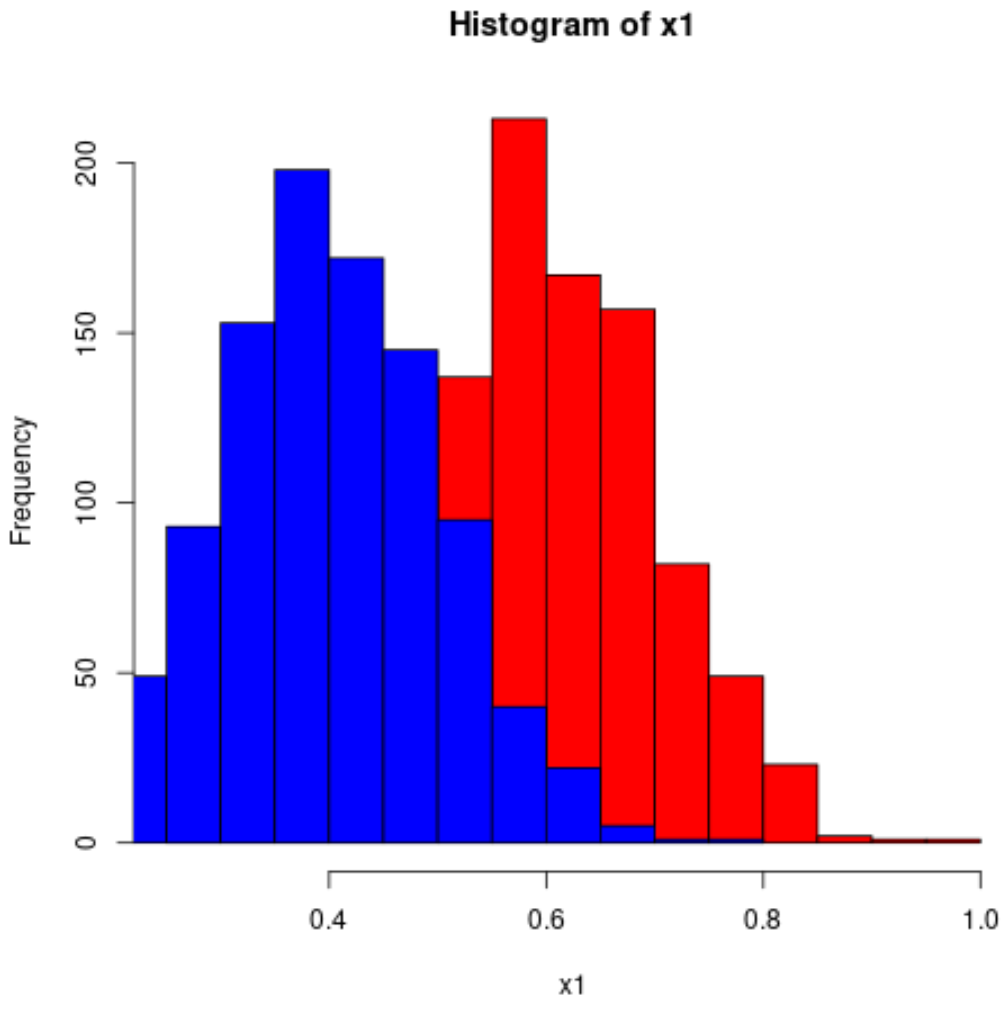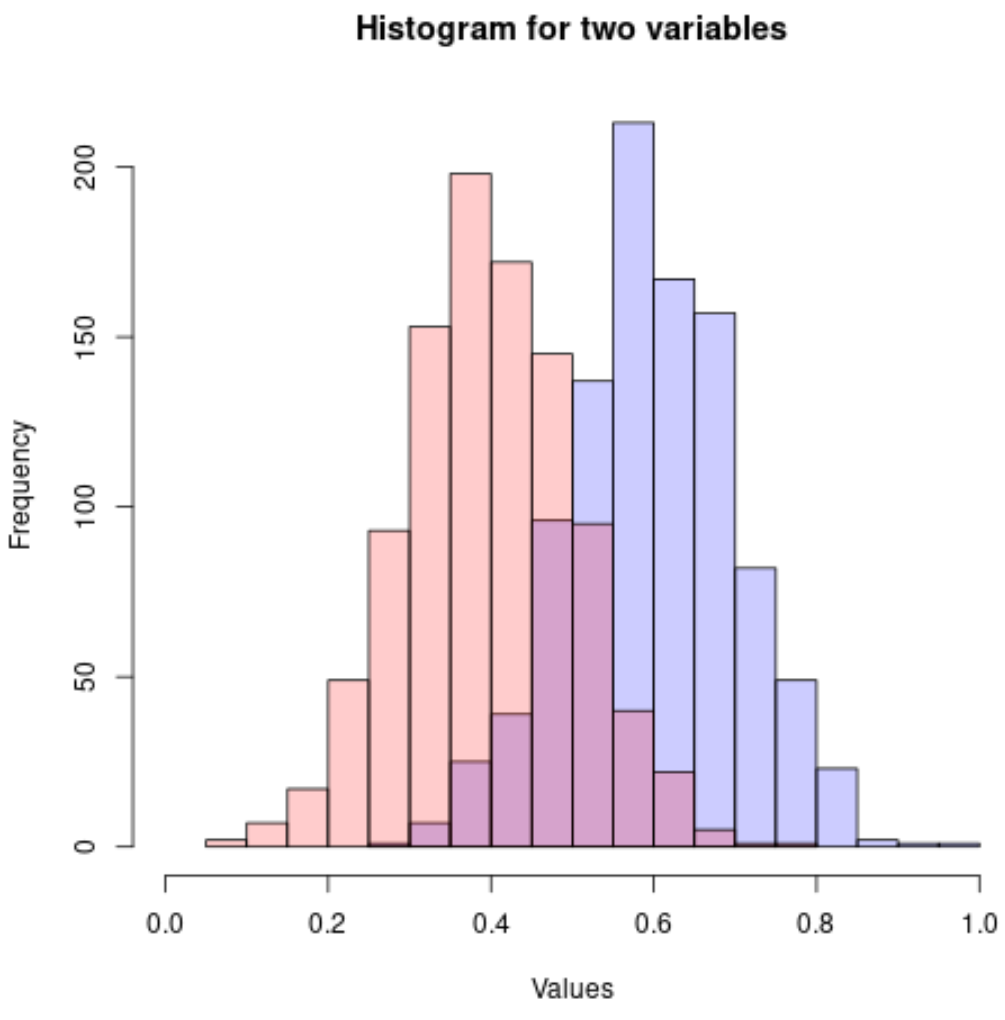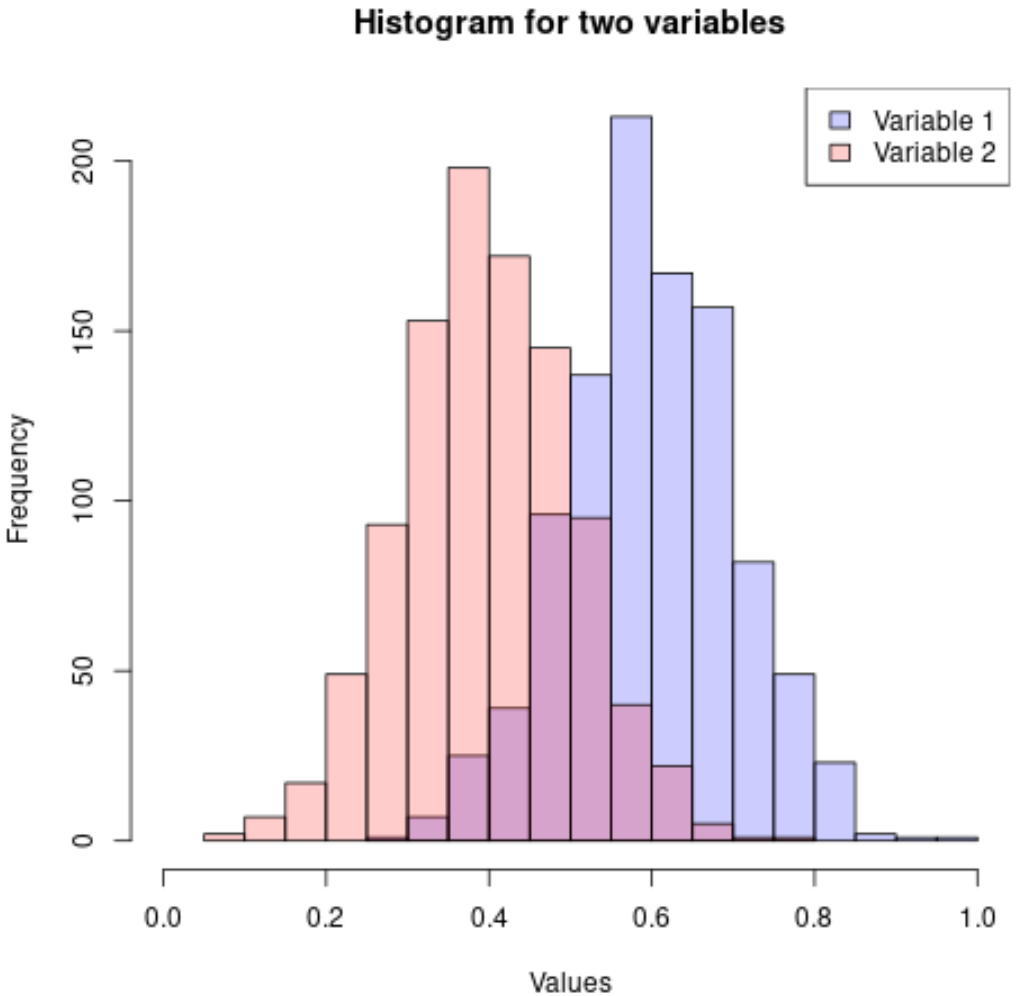Jak utworzyć histogram dwóch zmiennych w r
Histogram jest przydatnym sposobem wizualizacji rozkładu wartości dla danej zmiennej.
Aby utworzyć histogram dla zmiennej w języku R, możesz użyć funkcji hist() . Aby utworzyć histogram dla dwóch zmiennych w R, możesz użyć następującej składni:
hist(variable1, col=' red ') hist(variable2, col=' blue ', add= TRUE )
Poniższy przykład pokazuje, jak zastosować tę składnię w praktyce.
Przykład: Utwórz histogram dwóch zmiennych w R
Poniższy kod pokazuje, jak utworzyć histogram dwóch zmiennych w R:
#make this example reproducible set. seeds (1) #define data x1 = rnorm(1000, mean=0.6, sd=0.1) x2 = rnorm(1000, mean=0.4, sd=0.1) #plot two histograms in same graph hist(x1, col=' red ') hist(x2, col=' blue ', add= TRUE )

Ponieważ wartości histogramu nakładają się na siebie, dobrym pomysłem jest użycie kolorów rgb() o zwiększonej przezroczystości:
#make this example reproducible set. seeds (1) #define data x1 = rnorm(1000, mean=0.6, sd=0.1) x2 = rnorm(1000, mean=0.4, sd=0.1) #plot two histograms in same graph hist(x1, col=rgb(0,0,1,0.2), xlim=c(0, 1), xlab=' Values ', ylab=' Frequency ', main=' Histogram for two variables ') hist(x2, col=rgb(1,0,0,0.2), add= TRUE )

Możesz także dodać legendę, aby ułatwić interpretację histogramów:
#make this example reproducible set. seeds (1) #define data x1 = rnorm(1000, mean=0.6, sd=0.1) x2 = rnorm(1000, mean=0.4, sd=0.1) #plot two histograms in same graph hist(x1, col=rgb(0,0,1,0.2), xlim=c(0, 1), xlab=' Values ', ylab=' Frequency ', main=' Histogram for two variables ') hist(x2, col=rgb(1,0,0,0.2), add= TRUE ) #add legend legend(' topright ', c(' Variable 1 ', ' Variable 2 '), fill=c(rgb(0,0,1,0.2), rgb(1,0,0,0.2)))

Więcej samouczków dotyczących języka R można znaleźć na tej stronie .